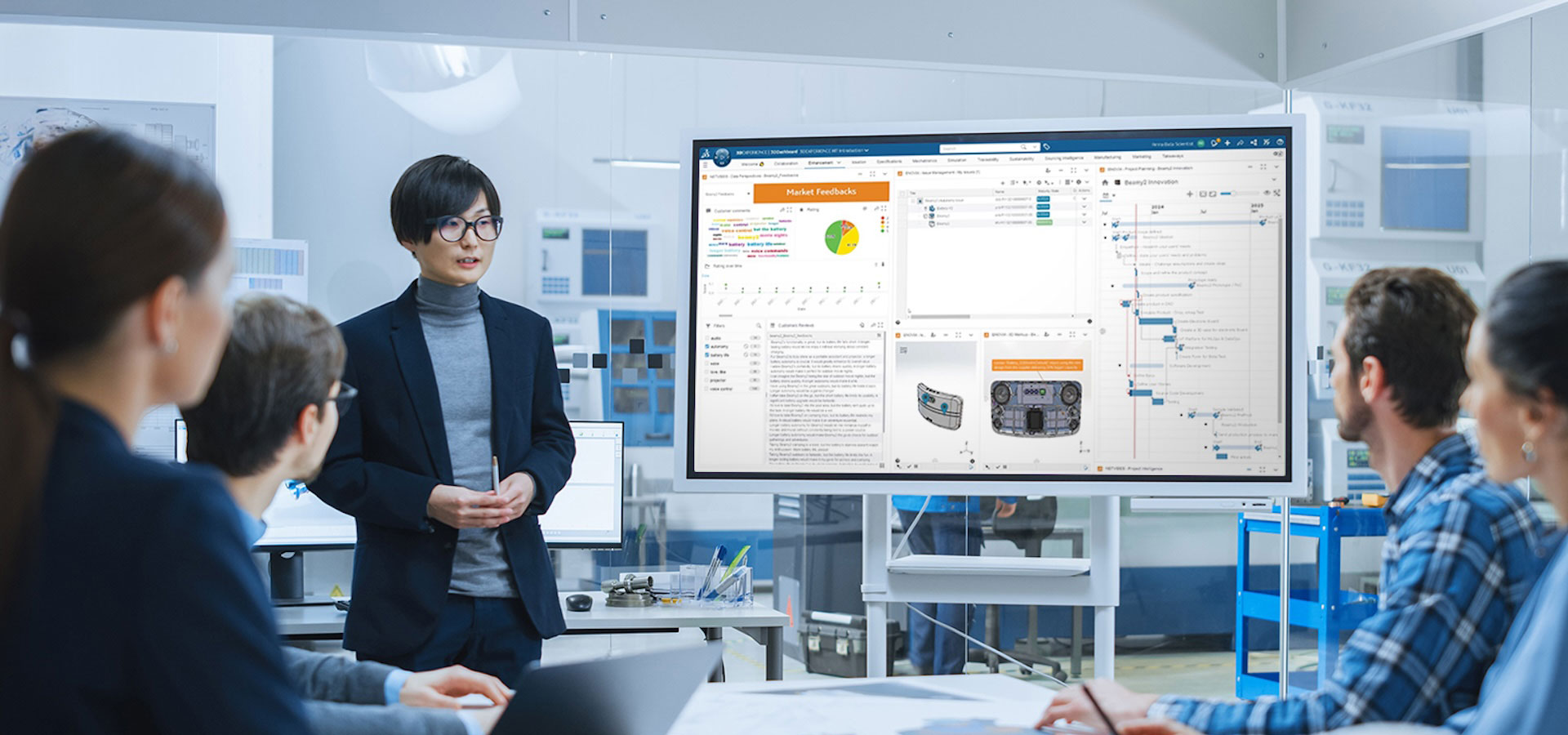Smartly Connected Teams Deliver Smart Device Innovation
Combine collaboration, tools and knowledge to deliver innovative high-tech experiences faster.
In today's fast-paced world of high-tech innovation, staying ahead of the curve requires more than just brilliant ideas and cutting-edge technology. It demands the seamless integration of collaboration, tools and knowledge sharing to accelerate the delivery of innovative experiences. This is particularly crucial for small and medium-sized high-tech companies, where agility and efficiency can make all the difference.
Watch our webinar to discover how Next Gen Engineering Collaboration can your boost your speed and engineering efficiencies:
Next-Gen Collaborative High-Tech Engineering
Discover a novel approach to empower your engineering teams:
- To boost efficiencies
- To improve performance and speed
- To leverage your team's tool and skills.
Collaboration is Essential for High-Tech Engineers
Effective collaboration is the cornerstone of high-tech engineering. It’s about more than just sharing data; it’s about creating a shared digital workspace where team members can ideate, interact and innovate seamlessly. A well-designed project space becomes the digital hub where every piece of information is contextualized, easily accessible and clearly linked to other relevant data points.
What are the Key Components of a Collaborative Workspace?
- Contextual Project Spaces: These spaces should ensure that all team members can find what they need quickly and understand the relationships between various pieces of information.
- Adaptability: Each team is unique, so the project space must be flexible enough to accommodate different working styles and project requirements.
- Simplicity and Intuitiveness: Tools like Kanban boards or post-it style interfaces can help make project spaces easy to navigate and use, fostering an environment where collaboration feels natural and inspiring.
By focusing on creating an environment where real-time visibility and interaction are the norms, teams can continuously inspire and stimulate innovation. This approach ensures that collaboration is not just an activity but a catalyst for creativity and efficiency.
Leveraging the Right High-Tech Engineering Solutions
High-tech engineering solutions can significantly enhance productivity and drive innovation. Those tools and practices should not only be advanced but also continuously evolving to meet the changing needs of users. This means embracing interconnected systems that streamline workflows and facilitate seamless collaboration.
What are Essential Tools for High-Tech Engineers?
- Design and Simulation Tools: Advanced tools for mechanical parts, electronics and software design are crucial. Additionally, early-stage simulations can save time and resources by allowing teams to explore multiple options without the need for physical prototypes.
- Project Management Tools: These tools help manage tasks, track progress and ensure that all team members are aligned. They should offer real-time updates and a single source of truth to enhance efficiency.
- Business Tools: For product managers and business professionals, tools that facilitate market research and competitive analysis are indispensable. These tools help teams stay focused on customer needs and market trends, ensuring that their innovations are both relevant and timely.
By integrating these tool categories into their workflows, high-tech teams can create a cohesive and efficient environment that not only boosts productivity but also fosters innovation through mutual reinforcement.
Capitalizing on Knowledge
For high-tech engineers, knowledge is the lifeblood of innovation. Sharing, growing and capitalizing on know-how is essential for maintaining a competitive edge. This involves more than just capturing explicit knowledge; it’s about tapping into the "tribal knowledge" within teams and across the organization.
What are the Best Strategies for Effective Knowledge Sharing?
- Model-Based Systems Engineering (MBSE): This approach structures a solution architecture and formalizes requirements, streamlining downstream processes and ensuring continuous project success.
- Front-Loading Production Engineering: Integrating manufacturing know-how early in the product design phase can significantly enhance product development and ensure that engineering efforts are aligned with manufacturing capabilities.
- Global Collaboration: Leveraging cloud-based solutions to create a shared, secure environment that transcends corporate and geographical boundaries can facilitate cross-cultural and interdisciplinary knowledge sharing.
By fostering a culture of continuous learning and knowledge sharing, high-tech companies can unlock new levels of innovation and efficiency. This holistic approach not only empowers individual teams but also strengthens the entire ecosystem, driving sustainable and breakthrough innovations.
Conclusion
Empowering your teams to deliver innovative high-tech experiences faster requires a balanced combination of collaboration, tools, and knowledge sharing. By creating collaborative workspaces, leveraging advanced tools and capitalizing on collective knowledge across their internal and partner ecosystems, small and medium-sized high-tech companies can accelerate their innovation processes and achieve greater success.
For more insights on optimizing your team's efficiency and driving high-tech excellence, join our upcoming webinar featuring industry experts, Michel Monsellier and Lou Feinstein. Stay ahead of the curve and ensure your team is equipped to meet the demands of today’s rapidly evolving high-tech landscape.
Explore our Industry Solution Experiences
Learn more about how our industry solutions can help you to achieve your professional ambition and business objectives
